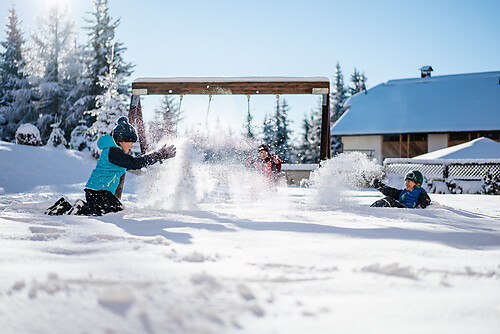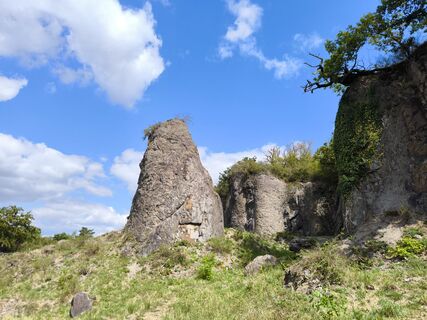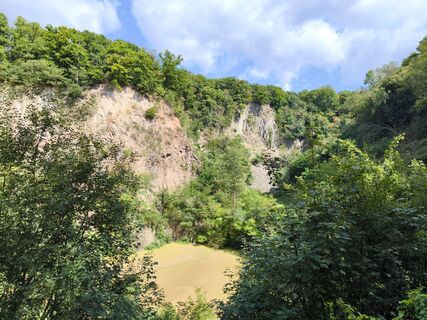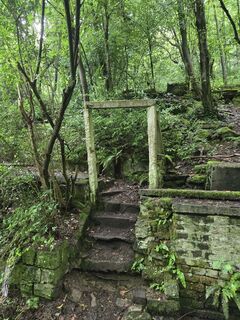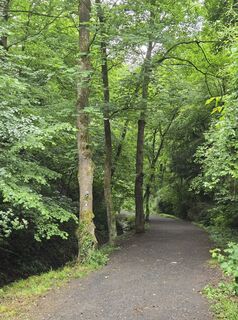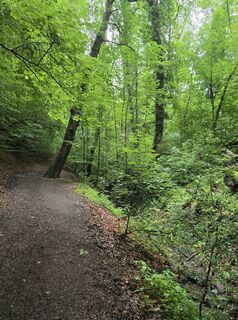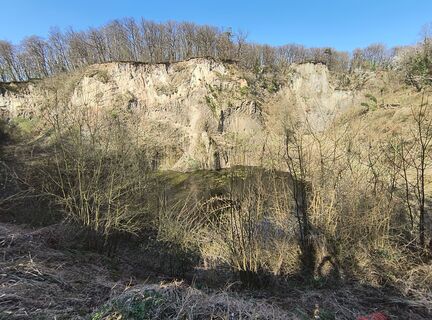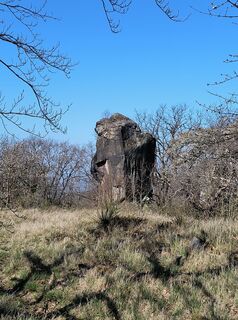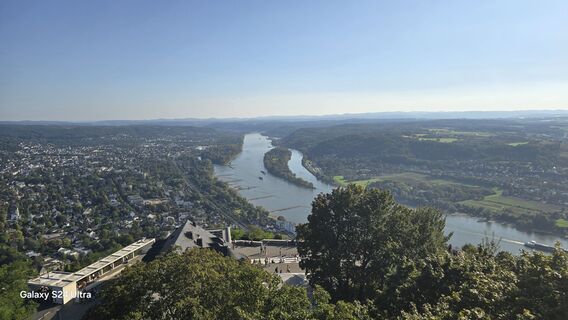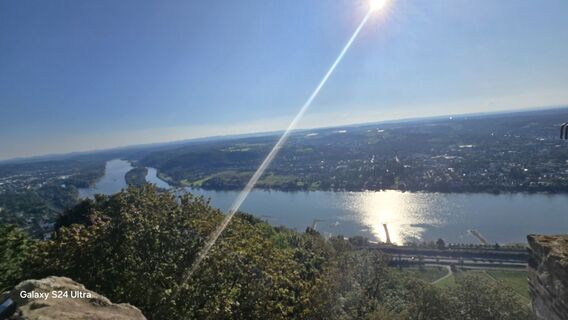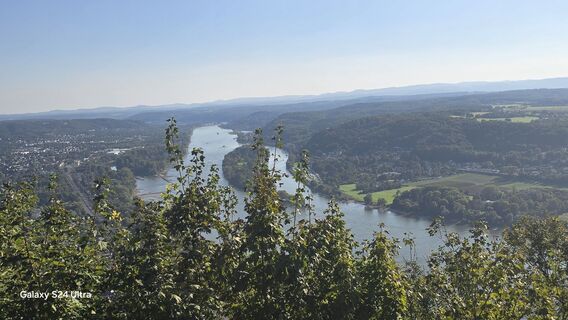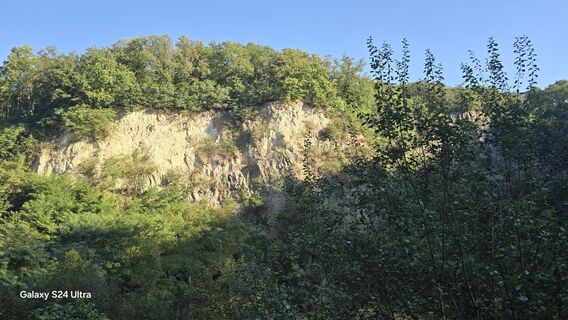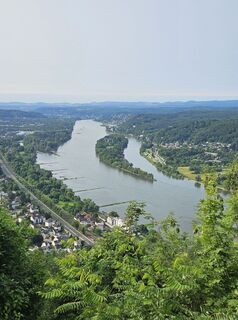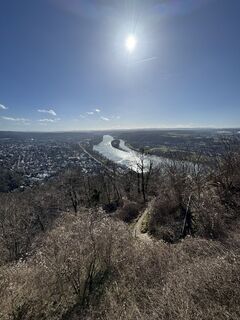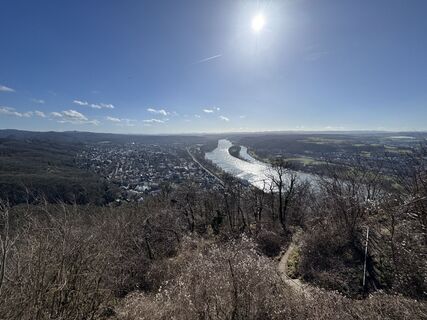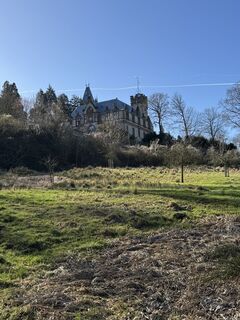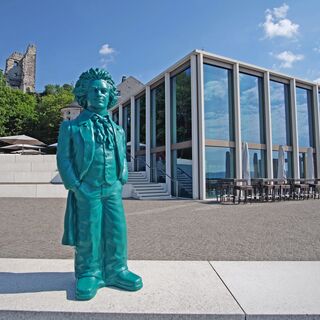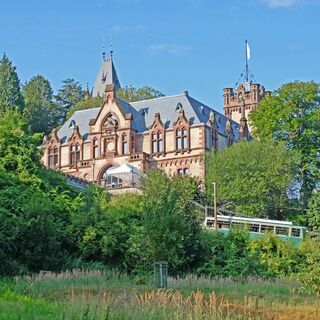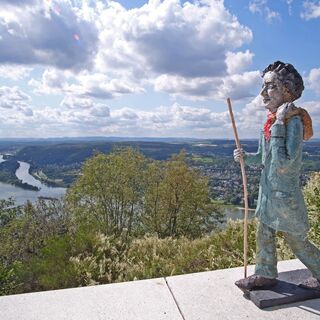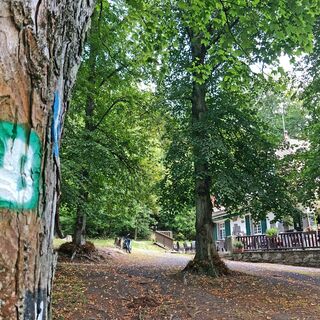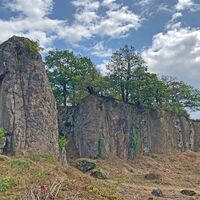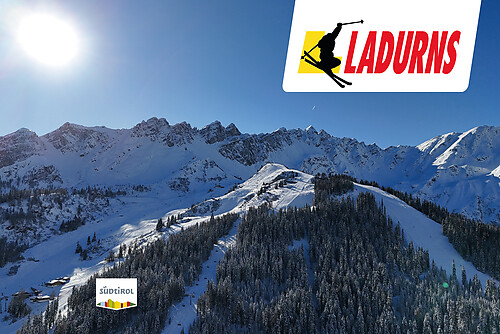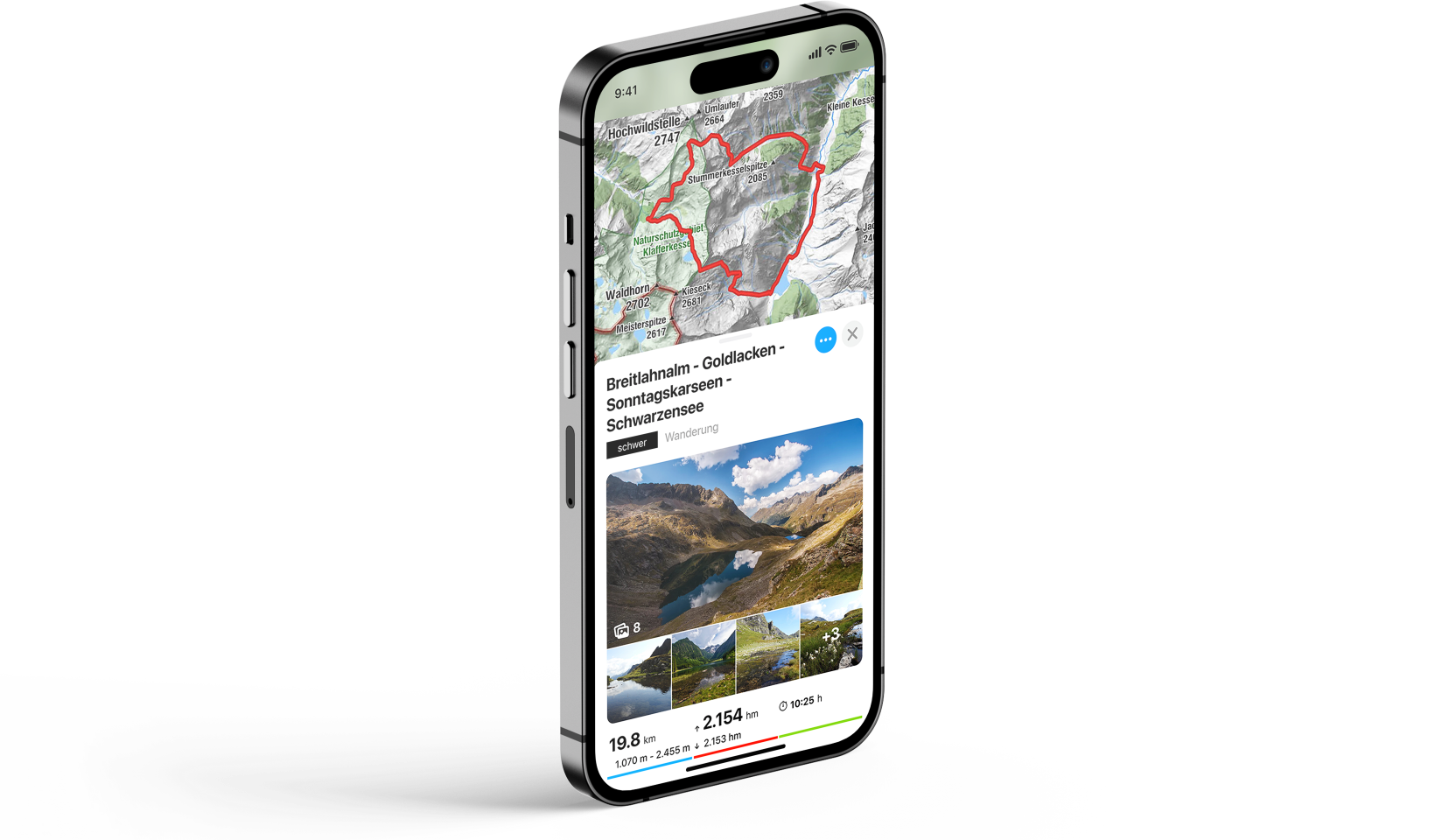Beethoven hiking trail - His love of the landscape
Fotografii ale utilizatorilor noștri
Over a distance of 15 km, partly on the Rheinsteig route and well-known long-distance trails, we want to give culture- and nature-interested visitors insights into Beethoven's landscape around 1780 using...
Over a distance of 15 km, partly on the Rheinsteig route and well-known long-distance trails, we want to give culture- and nature-interested visitors insights into Beethoven's landscape around 1780 using a landscape interpretation system. There was neither Drachenburg Castle, Nibelungenhalle nor the Grandhotel Petersberg. Stone quarrying was ubiquitous and Heisterbach monastery stood in full bloom with its abbey church, pond facilities and vineyards. In the Rhine plain the villages were small, picturesque or not yet founded and fields and vineyards stretched up to the Rhine stream. And on the mountain peaks, instead of forest inns, ruins stood and small paths instead of rack railways led up to them. With the Beethoven hiking trail, we transport you into the world of the great composer and hiking enthusiast Ludwig van Beethoven. The marking is oriented for a hike counterclockwise!
Ludwig van Beethoven, born in Bonn and baptized on December 17, 1770. Bonn is birthplace, place of childhood and youth, and place of musical education as well as influence for Beethoven. This formative early and mature period with many authentic Beethoven sites is a unique selling point, because Ludwig got to know his nature-shaped environment through excursions and hiking trips.
Source: The French composer and music critic Hector Berlioz (1803-1869), who visited the first Bonn Beethoven Festival in August 1845 and had his quarters in Königswinter, reports from eyewitnesses who told him that Beethoven often came across the Rhine by boat to dream and work in the Rhine plain. To make these local and natural spatial influences on Beethoven's works visible to visitors and locals, the Bonn Beethoven Jubilee Society mbH initiated a Beethoven tour through Bonn and the Rhein-Sieg district. 22 BTHVN steles were created, which are intended both to link all the places of his youth and to sustainably strengthen the city of Bonn as Beethoven city. In the Siebengebirge, three steles were installed describing life and work in Beethoven's times at Heisterbach monastery, on the Petersberg, and on the Drachenfels plateau. To ensure these steles do not stand alone at these certainly prominent places for Beethoven, these places were connected by a hiking trail.

Da
Da
The described Beethoven hiking trail is challenging, since many sections lead partly steeply uphill and downhill - we often use parts of the Rheinsteig, so good footwear should be standard.
The path is largely gravelled and also easy to walk on when wet. Individual sections, such as around the Drachenfels plateau, are paved, as are short sections near the inn or the Stenzelberg car park. This also applies to the plateau on the Petersberg. Narrow forest paths can be found at Geisberg, up to Rosenau and through the Stenzelberg.
From Cologne via the A3 and A59 as well as the B42 to Königswinter, then follow the signs towards Drachenfels and park under the Drachenbrücke near the lower station of the Drachenfels railway.
DB RE8, RB27 to "Königswinter Main Station" or tram line 66 to "Königswinter Ferry/SEALIFE", about 10 minutes walking to the starting point, timetable info at: www.vrsinfo.de
Designated parking spaces under the Drachenbrücke and at the Palastweiher in the old town of Königswinter.
Nachtigallental with Willi Ostermann monument, Drachenburg Castle, Drachenfels plateau, Landsturm monument, forest inns, Rosenau castle ruins, outcrops at Stenzelberg and Weilberg, Heisterbach monastery, Petersberg plateau, Bittweg stone crosses.
Camere web ale turului
Tururi populare în vecinătate
Nu ratați ofertele și inspirația pentru următoarea dvs. vacanță
Adresa dvs. de e-mail a fost adăugat la lista de corespondență.




